Deleted
Deleted Member
Posts: 0
|
Post by Deleted on Nov 9, 2013 0:14:01 GMT
When I first became a member here, my very first post was about extensive modifications I had made to a Musical Fidelity X-DAC V3.
Mike has also posted numerous photos of gear he has modified.
Does anyone else have photos or details of modifications to various MF gear that they have done themselves, or had performed professionally ? As R.G. is arguably the premiere source of MF equipment modification information on the 'net,(and also why I originally became a member here) it would be nice to be able to further expand our existing section on MF equipment modifications.
Regards
Alex
|
|
|
|
Post by dnice1 on Dec 9, 2013 10:47:30 GMT
Hi Alex
I have only recently become a member but have been reading various posts on R.G regarding the MF X-CAN upgrades.
I mainly service Nakamichi cassette decks as a hobby but have recently acquired an M1-DAC to partner with my Marantz CD player.
Last week just to peek inside I opened up my M1-DAC to find that MF is using the same Jamicon caps in this DAC as the X-CANs so I thought why not replace them with some quality caps. So I searched R.G but couldn't find any posts where someone had shared their experience, I couldn't find anything on google either.
Due to the lack of any such info available I am sure there will be a lot of people like myself who would be interested if a new section for M1-DAC is added.
Regards
Nadeem
|
|
Deleted
Deleted Member
Posts: 0
|
Post by Deleted on Dec 9, 2013 11:31:40 GMT
Hi Alex I have only recently become a member but have been reading various posts on R.G regarding the MF X-CAN upgrades. I mainly service Nakamichi cassette decks as a hobby but have recently acquired an M1-DAC to partner with my Marantz CD player. Last week just to peek inside I opened up my M1-DAC to find that MF is using the same Jamicon caps in this DAC as the X-CANs so I thought why not replace them with some quality caps. So I searched R.G but couldn't find any posts where someone had shared their experience, I couldn't find anything on google either. Due to the lack of any such info available I am sure there will be a lot of people like myself who would be interested if a new section for M1-DAC is added. Regards Nadeem Nadeem I don't remember seeing much about this DAC. You could always start the ball rolling with some internal and external photos, and a copy of the schematic if you have one. Those familiar with the various MF components would then be able to offer some advice about component replacement etc. My own experience is mainly with the X-DAC V3 which I was able to transform to a much higher level of performance. Regards Alex P.S. The X-DAC V3 had Jamicons too. |
|
|
|
Post by dnice1 on Dec 9, 2013 12:51:12 GMT
Nadeem I don't remember seeing much about this DAC. You could always start the ball rolling with some internal and external photos, and a copy of the schematic if you have one. Those familiar with the various MF components would then be able to offer some advice about component replacement etc. My own experience is mainly with the X-DAC V3 which I was able to transform to a much higher level of performance. Regards Alex P.S. The X-DAC V3 had Jamicons too. Alex I will be glad to post photos, just don't know which board to post them to? Can I post them in this thread? |
|
|
|
Post by dnice1 on Dec 9, 2013 14:44:44 GMT
Here are some internal pics of my stock Musical Fidelity M1-DAC: 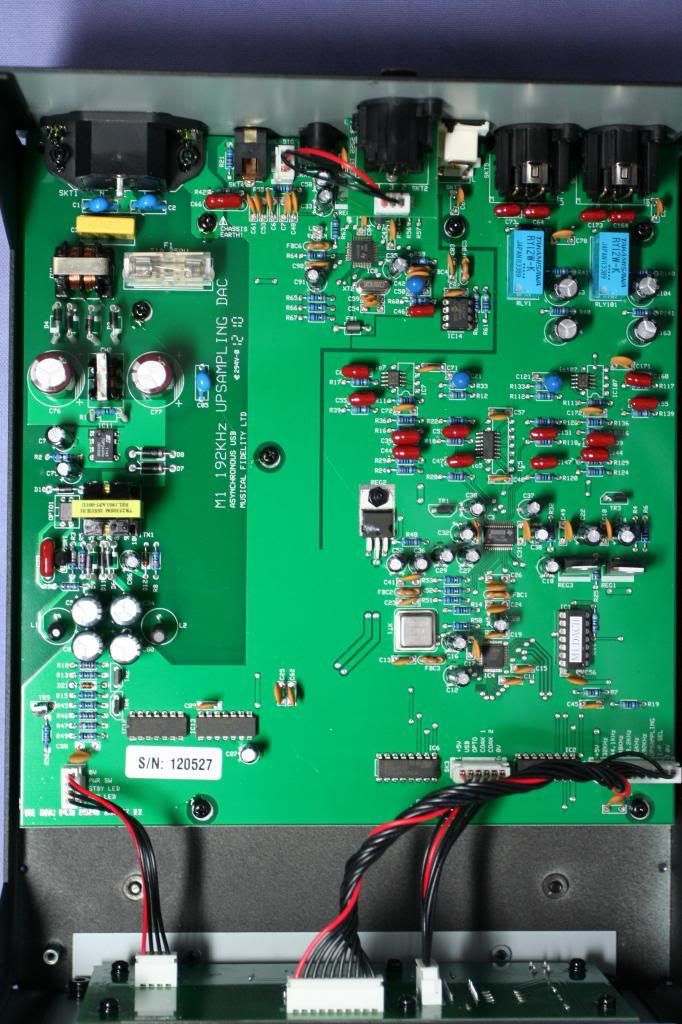 M1-DAC Power Supply Section  M1-DAC I/O and DAC Section 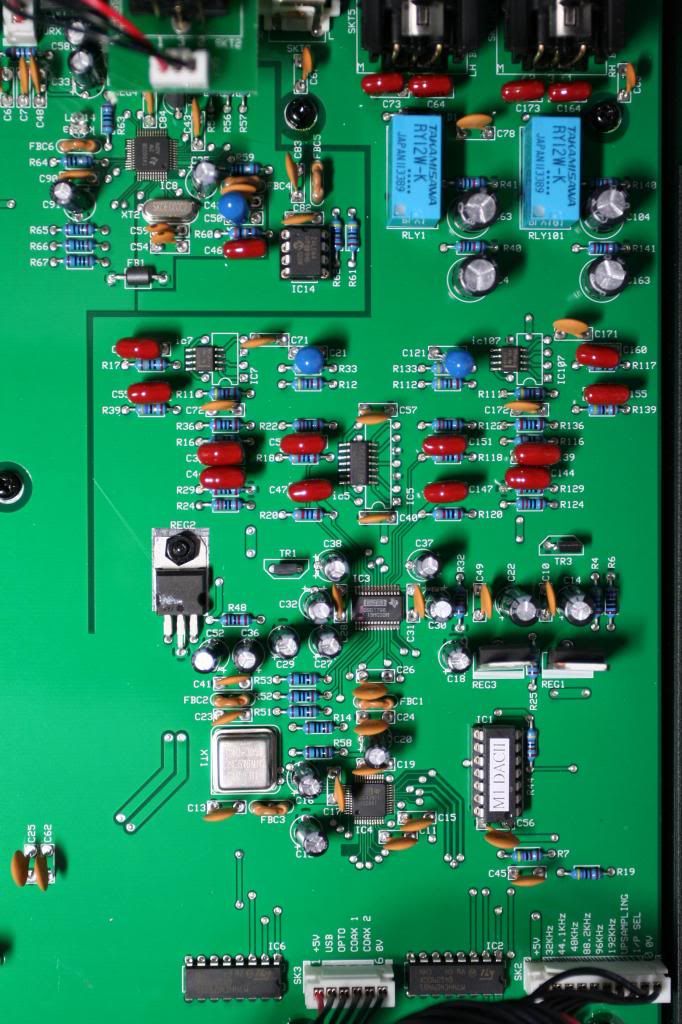 M1-DAC N5532 Surface Mounted Opamp 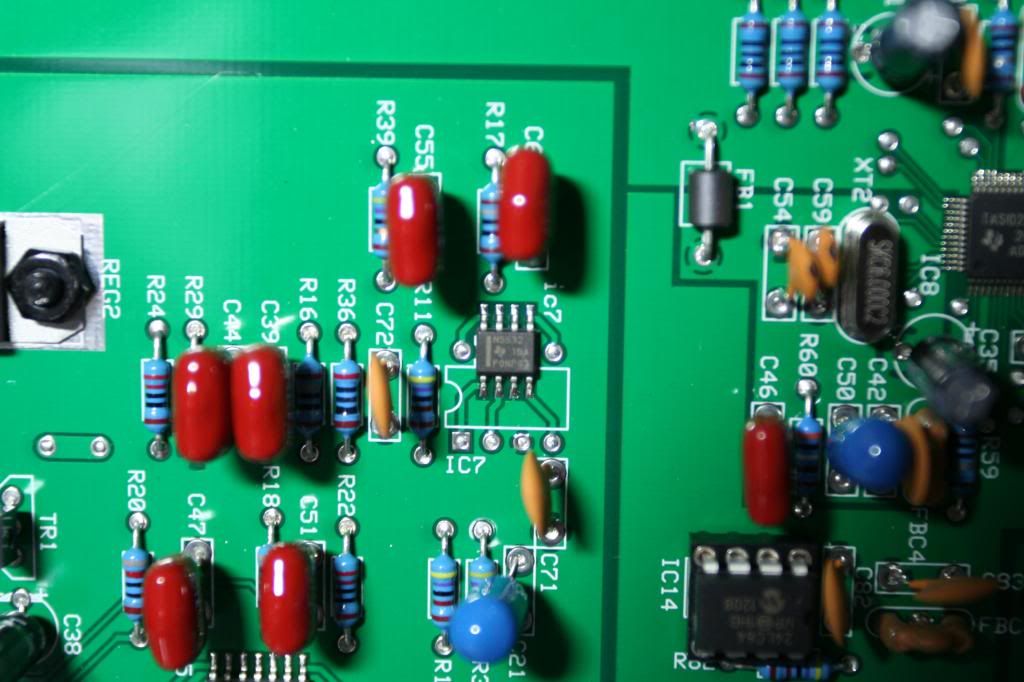 M1-DAC Power Supply Jamicon Caps 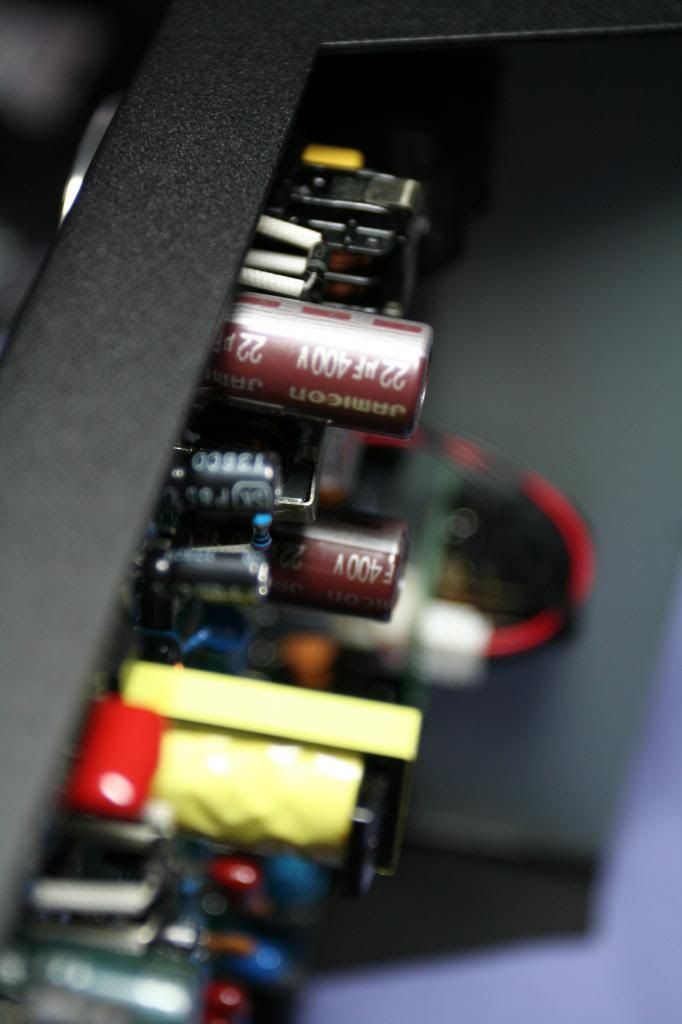 M1-DAC Power Supply Jamicon Caps 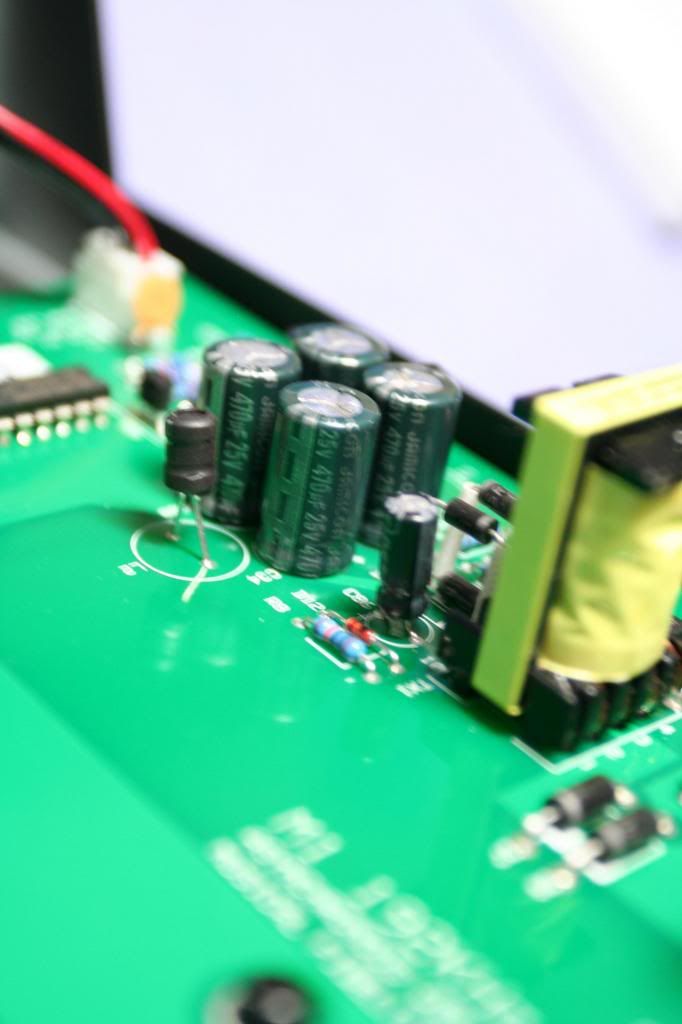 |
|
Deleted
Deleted Member
Posts: 0
|
Post by Deleted on Dec 9, 2013 20:57:01 GMT
dnice
I can see now why there is very little about this DAC. Many people shy away from any DAC that uses an internal SMPS.
Thanks for all the trouble you went to for the photos.
Mike may wish to move your stuff to a more suitable area, as it's material like this that adds to our wealth of information on MF gear,
compared with most other sites, that helps many purchasers of MF gear when they have problems, or simply wish to improve on the original design. Due mainly to Mike's efforts, RG appears to be the main source of information on their products.
Regards
Alex
P.S.
My own highly modified build of a Silicon Chip designed DAC also uses the DSD1796. With my modified X-DAC V3, replacing the Xtal Oscillator with a .3PPM TCXO and improving the TCXO's incoming power, results in marked improvements, especially with higher resolution matrial. On the surface at least, it resembles the X-DAC V3 in that area ,except for more SM type components. Perhaps hard to implement, but the +3.3V DSP pins of the 1796 also benefit from a higher quality +3.3V supply
|
|
|
|
Post by PinkFloyd on Dec 9, 2013 21:32:53 GMT
Switched mode PSU.... erm, end of discussion. Sorry  |
|
|
|
Post by PinkFloyd on Dec 9, 2013 21:40:09 GMT
Thanks for all the trouble you went to for the photos. Yes, thanks  |
|
|
|
Post by dnice1 on Dec 10, 2013 12:19:24 GMT
dnice I can see now why there is very little about this DAC. Many people shy away from any DAC that uses an internal SMPS. Thanks for all the trouble you went to for the photos. Mike may wish to move your stuff to a more suitable area, as it's material like this that adds to our wealth of information on MF gear, compared with most other sites, that helps many purchasers of MF gear when they have problems, or simply wish to improve on the original design. Due mainly to Mike's efforts, RG appears to be the main source of information on their products. Regards Alex P.S. My own highly modified build of a Silicon Chip designed DAC also uses the DSD1796. With my modified X-DAC V3, replacing the Xtal Oscillator with a .3PPM TCXO and improving the TCXO's incoming power, results in marked improvements, especially with higher resolution matrial. On the surface at least, it resembles the X-DAC V3 in that area ,except for more SM type components. Perhaps hard to implement, but the +3.3V DSP pins of the 1796 also benefit from a higher quality +3.3V supply Sorry to know that people shy away from SMPS but I think that this DAC really sounds good. Just to see if I could improve the SQ a little bit more without altering anything else, I intend to replace all the electrolytics in the power supply as well as the rest of the board so I have ordered some Nichicon KZ & ES for everything except the power supply. I cannot make my mind up for the power supply caps though and would be grateful if someone could help. Currently the power supply uses 2 x Jamicon TX 22uF 400v and 4 x Jamicon MZ 470uF 25v (high ripple rating). So far I have short listed the Panasonic EE for the 22uF and FM for the 470uF, what do you guys think? Any other suitable replacements? I am not sure how much of a difference this upgrade will make but I do know that when I replace the DC power supply caps in my Nakamichi decks it makes a hell of a difference in SQ. I will report back once I have finished in case anybody is interested. Regards Nadeem |
|
|
|
Post by dnice1 on Dec 10, 2013 12:22:05 GMT
Thanks for all the trouble you went to for the photos. Yes, thanks  You're welcome. |
|
Deleted
Deleted Member
Posts: 0
|
Post by Deleted on Dec 10, 2013 13:12:42 GMT
Nadeem
After having a close look at the layout, I believe it a stripped down version of the X-DAC V3 in many respects.
As I am heavily into PC audio using very low noise and very low impedance John Linsley Hood designed, but modified, PSU Add-ons, I am sorry, but I don't share your enthusiasm for SMPS. Even the USB ports of the Oppo 95 and Oppo 103 which use SMPS power for the digital area , are markedly improved with USB memory stick playback by using an external +5V JLH PSU with a modified USB cable that stops noisy +5V SMPS getting into the D+ and D- data lines.(red wire disconnected at the USB-A plug at the PC end.)
Further improvements are obtained at the external PSU if the screen connection is broken between the incoming and outgoing Corsair socket. In the case of a DAC, the screen of the outgoing USB socket could be connected to IEC earth of the Linear PSUs IEC socket. The reason is that with many USB devices there is an internal connection between the black 0 volts wire and the screen wire.
When you use a PC that is connected to IEC earth this results in an earth loop.
It can be fraught with danger to replace capacitors in the secondary side of an SMPS supply, as the secondary side is tuned, and the characteristics of the capacitors must be retained. The safest way to improve a SMPS supply is to replace the HV bridge rectifiers with fast , slow recovery types such as the BYV26C, Also try a 100nF 630V capacitor across the large electro on the primary side.
BTW, this DAC doesn't even use Coax SPDIF transformers like the X-DAC V3 did.
If you are using this DAC for USB playback I would highly recommend trying a DIY PSU such as the JLH, or even the iFi USB PSU and it's optional USB cable. Try it with a good regulated variable voltage bench supply first if you have one.
It's easy for an experience person to chop the PC end plug off the USB cable and replace it with a solder type USB plug without the red wire connected.Just fold it back. A piece of heatshrink can be then fitted over the new plug.
Yes, I also played around with Nakamichi tape decks, and they benefitted greatly if additional tantalum caps were connected across the long PSU PCB tracks.
Regards
Alex
P.S.
Have you measured the AC voltage between the earth side of the RCA sockets and mains earth ?
|
|
|
|
Post by dnice1 on Dec 12, 2013 15:20:08 GMT
After having a close look at the layout, I believe it a stripped down version of the X-DAC V3 in many respects. As I am heavily into PC audio using very low noise and very low impedance John Linsley Hood designed, but modified, PSU Add-ons, I am sorry, but I don't share your enthusiasm for SMPS. Even the USB ports of the Oppo 95 and Oppo 103 which use SMPS power for the digital area , are markedly improved with USB memory stick playback by using an external +5V JLH PSU with a modified USB cable that stops noisy +5V SMPS getting into the D+ and D- data lines.(red wire disconnected at the USB-A plug at the PC end.) Further improvements are obtained at the external PSU if the screen connection is broken between the incoming and outgoing Corsair socket. In the case of a DAC, the screen of the outgoing USB socket could be connected to IEC earth of the Linear PSUs IEC socket. The reason is that with many USB devices there is an internal connection between the black 0 volts wire and the screen wire. When you use a PC that is connected to IEC earth this results in an earth loop. It can be fraught with danger to replace capacitors in the secondary side of an SMPS supply, as the secondary side is tuned, and the characteristics of the capacitors must be retained. The safest way to improve a SMPS supply is to replace the HV bridge rectifiers with fast , slow recovery types such as the BYV26C, Also try a 100nF 630V capacitor across the large electro on the primary side. BTW, this DAC doesn't even use Coax SPDIF transformers like the X-DAC V3 did. If you are using this DAC for USB playback I would highly recommend trying a DIY PSU such as the JLH, or even the iFi USB PSU and it's optional USB cable. Try it with a good regulated variable voltage bench supply first if you have one. It's easy for an experience person to chop the PC end plug off the USB cable and replace it with a solder type USB plug without the red wire connected.Just fold it back. A piece of heatshrink can be then fitted over the new plug. Yes, I also played around with Nakamichi tape decks, and they benefitted greatly if additional tantalum caps were connected across the long PSU PCB tracks. Regards Alex P.S. Have you measured the AC voltage between the earth side of the RCA sockets and mains earth ? Alex, thanks for the detailed explanation and very good suggestions. As this is my first DAC I didn't even check that it had an SMPS when I bought it second hand from someone. I will make sure I stay away from such devices next time. As per your advice I will not re-cap the power supply but the bridge rectifiers you mentioned, are they a direct replacement for the ones in my DAC? If not then how do I find the specs of what's already in as I can't find the schematics anywhere? I don't use this DAC with a PC, only got it connected to a Marantz CD player using a digital coaxial cable in my HiFi system. I am not into digital music that much so only use it occasionally (its mainly for my wife, while I prefer analogue). The idea of replacing the caps came from my experience with the Nakamichi gear which benefited significantly by it so I thought why not do the same with the DAC it may improve the SQ. Now after reading your posts I have decided to re-cap just the main board (as I already have the replacement caps) and leave the PS as it is for the time being. I will look into the linear power supplies you mentioned and may decide to upgrade it sometimes in the future. I will try and measure the AC voltage as you suggested when I open it up again for the re-cap. Best regards Nadeem |
|
Deleted
Deleted Member
Posts: 0
|
Post by Deleted on Dec 12, 2013 20:38:07 GMT
Hi Nadeem
You will see those 4 diodes side by side in your photo .
If the existing diodes are say UF4007, then don't bother replacing them .
If they are 1N4007 then the BYV26C fast, slow recovery type diodes are quite suitable. I have used those in a couple of Oppo DVD players with worthwhile results.
You should be able to check for AC voltage using your DMM by connecting one side to the earth side of the L or R RCA output sockets, and the other to IEC earth of a power board. Sometimes you can see around 100V AC which is a result of most consumer SMPS having a low value high voltage capacitor between the primary and secondary sides. This normally results in degraded S/N compared with using a linear PSU. .
Kind Regards
Alex
|
|
|
|
Post by dnice1 on Dec 12, 2013 21:56:11 GMT
Sometimes you can see around 100V AC which is a result of most consumer SMPS having a low value high voltage capacitor between the primary and secondary sides. This normally results in degraded S/N compared with using a linear PSU. . Kind Regards Alex Alex you are absolutely right, those two big brown caps are 22uF 400v. The question which arises now is: can this AC voltage be somehow reduced if not completely removed and how? Regards Nadeem |
|
Deleted
Deleted Member
Posts: 0
|
Post by Deleted on Dec 12, 2013 22:59:58 GMT
Sometimes you can see around 100V AC which is a result of most consumer SMPS having a low value high voltage capacitor between the primary and secondary sides. This normally results in degraded S/N compared with using a linear PSU. . Kind Regards Alex Alex you are absolutely right, those two big brown caps are 22uF 400v. The question which arises now is: can this AC voltage be somehow reduced if not completely removed and how? Regards Nadeem Hi Nadeem Sometimes with SMPS gear you can obtain a small audible improvement by earthing the metal case. I would be more inclined to try the method below, though it's more about stopping that annoying little bite. Silicon Chip magazine presented a small project where a 22nF 275V AC X2 capacitor was connected from the player's case to an additional mains earth wire via a 3 pin plug, with only the earth wire connected. The thing I hate most is the nasty little bite that you get with some SMPS gear when plugging in to an earthed power amplifier. Regards Alex |
|
|
|
Post by dnice1 on Dec 13, 2013 16:02:49 GMT
Alex you are absolutely right, those two big brown caps are 22uF 400v. The question which arises now is: can this AC voltage be somehow reduced if not completely removed and how? Regards Nadeem Hi Nadeem Sometimes with SMPS gear you can obtain a small audible improvement by earthing the metal case. I would be more inclined to try the method below, though it's more about stopping that annoying little bite. Silicon Chip magazine presented a small project where a 22nF 275V AC X2 capacitor was connected from the player's case to an additional mains earth wire via a 3 pin plug, with only the earth wire connected. The thing I hate most is the nasty little bite that you get with some SMPS gear when plugging in to an earthed power amplifier. Regards Alex Alex. Will something like this do? uk.rs-online.com/web/p/polypropylene-film-capacitors/4856649/So what I understood is that once this cap is connected to the case, there will be a second power cable just carrying the earth connection plugged to a separate AC outlet? I will check the rectifier diodes tomorrow to see if they could also be upgraded with the ones you suggested. Thanks for your valuable input, I appreciate it. Best regards Nadeem |
|
Deleted
Deleted Member
Posts: 0
|
Post by Deleted on Dec 13, 2013 20:25:34 GMT
Nadeem
I will be shortly heading off for early supermarket shopping then heading off for a listening session with another couple of RG members.
I will email you a copy of the article after I return home again.
Alex
|
|
|
|
Post by dnice1 on Dec 14, 2013 11:12:07 GMT
Nadeem I will be shortly heading off for early supermarket shopping then heading off for a listening session with another couple of RG members. I will email you a copy of the article after I return home again. Alex Alex Thanks for the copy of the article, I now remember that my Sony DVD player used to give me that little bite every time I used it connected to my CRT TV. Here in the UK we have earthed 3 pin mains but Just checked the plug of my Sony and it's a 3 pin type but the earth pin is just plastic, I think it's a prime candidate for the tingler mod. The DAC though has an IEC socket and connected using an IEC cable with earth connected, so do you think there would still be a need for this mod as I don't get any bite when I touch the case? Also, It's connected to the amp via balanced leads. I will check the voltage between the RCA ground and IEC earth today and report back. Best regards Nadeem |
|
|
|
Post by dnice1 on Dec 14, 2013 16:59:28 GMT
Hi Nadeem You will see those 4 diodes side by side in your photo . If the existing diodes are say UF4007, then don't bother replacing them . If they are 1N4007 then the BYV26C fast, slow recovery type diodes are quite suitable. I have used those in a couple of Oppo DVD players with worthwhile results. You should be able to check for AC voltage using your DMM by connecting one side to the earth side of the L or R RCA output sockets, and the other to IEC earth of a power board. Sometimes you can see around 100V AC which is a result of most consumer SMPS having a low value high voltage capacitor between the primary and secondary sides. This normally results in degraded S/N compared with using a linear PSU. . Kind Regards Alex Alex I measured the voltage across the RCA and IEC earth and good news it's only 0.01v AC but the diodes are 1N4007 so as per your advise I will replace them with the BYV26C. Replaced the 4 Jamicon bipolars with Nichicon ES but couldn't do the rest of the main board due to my stupidity, ordered caps' leads are 0.3 mm thicker and won't fit so need to find suitable replacements. Regards Nadeem |
|
|
|
Post by davefrumtarn on Feb 9, 2014 15:08:35 GMT
Hey Nadeem, How did you go on with the M1 DAC ? Did replacing the 4 Jamicon bipolars with Nichicon ES result in improved sound ? Did you replace the smaller caps too ?
Kind regards, Dave. |
|